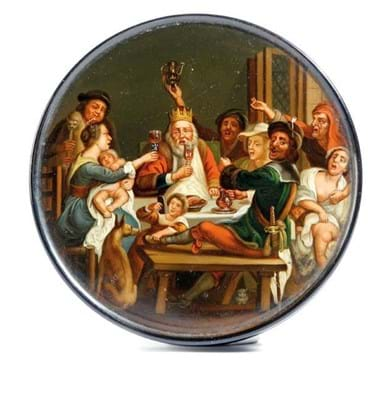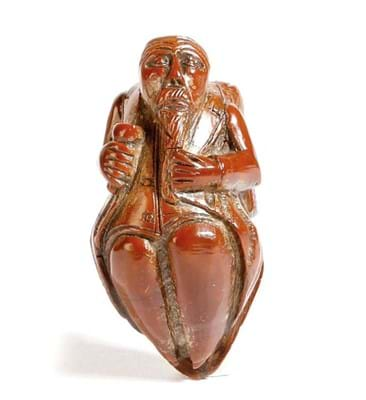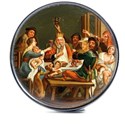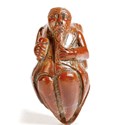Intricately carved by French craftsmen in the late 18th-early 19th centuries were some 70 snuff boxes, pomanders and trinket boxes made from coquilla nuts. The dense shells of the Brazil palm oil nuts make them suitable for turning on lathes.
Offered in 33 lots at Salisbury pitched in two and low-three figures, top-seller was a 3in (7.5cm) long snuff box, carved as a bearded soldier holding a goblet. With a hinged lid in the form of his pack, it sold to a collector just under top estimate at £190.
From another source came a collection of 22 papier mâché snuff boxes, including three from the Braunschweig works of Johann Heinrich Stobwasser (1740-1829), the innovative pioneer of lacquered papier mâché.
The one which led the collection was a 4in (9.5cm) diameter box, painted with The Feast of the Bean King after Jacob Jordaens, signed Stobwassers Fabrik. It more than quadrupled top hopes, selling to a German dealer at £2600.
Papier mâché Easter eggs from 19th century Russia were consigned to W&W from the collection of Dr Venetia Newall (1935-2017), the influential published authority on folklore and past president of the Folklore Society.
Thirteen eggs offered in nine lots all got away in three figures, the best single egg being an example standing 6½in (16.5cm) tall including the white metal mounts. It was painted to one side with Christ and his disciples, and to the other with a view of the Kremlin. Estimated at £100-150, the egg sold to a Russian collector at £550.
Five fragments of 15th century French stained glass from Saint-Maclou, Rouen, consigned from a private collection also sold well, led by a 14 x 5in (36 x 12cm) piece depicting a prophet holding a scroll. Under a later gothic canopy, it was estimated at £200-300 but sold to a dealer at £1700.




















